The Belfast of 1989 was not a peaceful place. But under that cloud, a charitable trust was formed to try to transform an unofficial dump at Colin Glen in the west of the city.
Quite the challenge, as this piece of land is bounded on three sides by socially disadvantaged areas on an interface*.
“Half of the exploded buildings in Belfast were brought up here and tipped into it. The river was polluted and something like 70,000 tonnes of rubbish was taken out by the community,” CEO of Colin Glen, Colin O’Neill tells me, as we stroll through the Gruffalo Forest at the River Entrance of the park.
Many years prior to the park’s foundation, the Northern Irish government bought the Dunmurry Golf Course to build a road to the DeLorean plant.
Then, in 1994, they gave the golf course to Colin Glen: the idea being that a golf course could become a social enterprise with revenue-generating potential that would make public funding redundant.
“Now, it was a nice idea but it just didn’t work,” Colin says - because a nine hole golf course couldn’t compete with some of the top golf courses in Northern Ireland that surround it. But with the reduction in public funding proceeding none-the-less, the organisation was on its last legs.
Colin joined Colin Glen in 2010, quickly realising that the income gap had to be closed and investment was vital. SKYTrek, a ropes course and zip line attraction, was the first initiative on their road to financial stability.
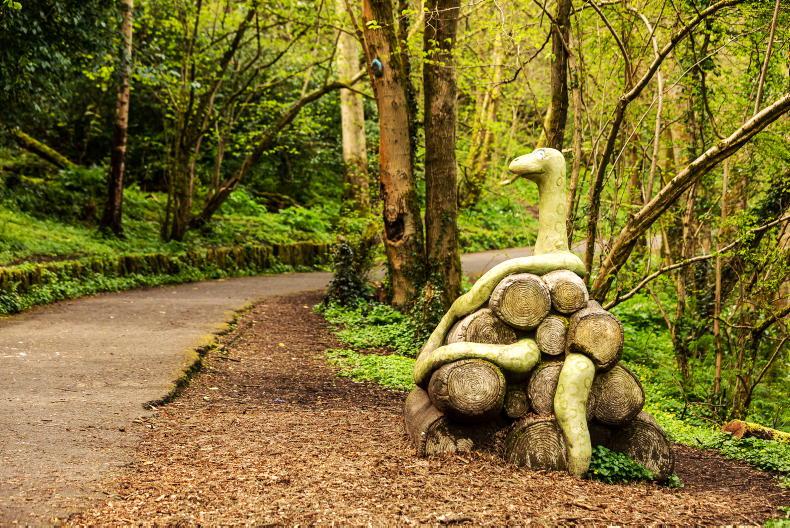
“SKYTrek was our first toe in the water of trying to become a visitor destination. It was funded through a host of different grants, pulled in from a lot of different funds by convincing them that we could do this”.
Walking along the woodland path, the various Gruffalo book characters greet you. This was inspired by Colin’s own children. “I was telling the story to my children when it clicked that actually we’ve got a forest park - so why don’t we try and do that.”
It took two years to secure agreement with the image rights holders but the 3D sculptures did what Colin hoped they would, changing the type of person who was coming into the park.
Anti-social behaviour
As if on cue, I looked down quizzically at the burnt tarmac beneath my feet. As Colin’s eyes followed my gaze he explained: “We still have some antisocial behaviour - that is where someone brought in wheelie bins and set them on fire -but in comparison to before, it’s a lot less than it used to be.
“This area was being used by groups of older men on a daily basis for drinking. The police wouldn’t come in here.
“The Gruffalo brought younger families in. We started to see a change in terms of perception from the local community. From being an antisocial hotspot to an area where people would feel safe to come.”
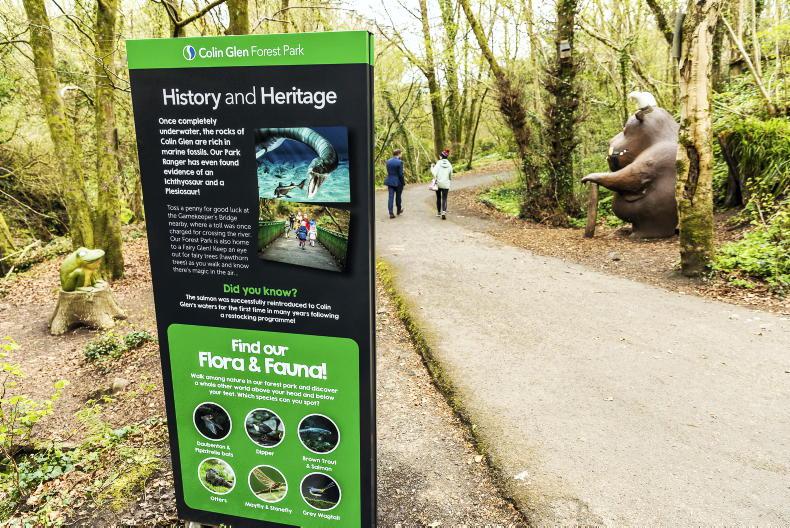
Colin’s strategy from the start has been to increase footfall. On the morning of his interview for the role, he walked this same path through the park and was surprised when two scramblers came racing around the corner. In hindsight, he reflects that “it wasn’t unusual.
One of the things I said to the board, was ‘we need to make sure that we are tackling antisocial behaviour by making it uncomfortable for those engaged in antisocial behaviour’.
“If you’ve got hundreds of families and people walking through, the people looking to take drugs or set fire to things aren’t going to have the chance to do that. The important thing for us was that if there was damage we fix it straight away, because once you leave it to fester, people start to think: nobody cares about this place, so why should we?
“The Gruffalo is free. You can hear kids running up to the statues, exactly like my kids did seven or eight years ago. It has worked in that it has got community buy-in.”
Local people support local initiatives
Continuing to innovate is central to this community support. And 2021 was transformational with the opening of the Black Bull Run, the new driving range, the short zip line and the dome.
“So we’ve always tried to be as innovative as we can. You are between Lenadoon, Suffolk and Poleglass, three areas of Belfast that are massively socially deprived on an interface. We took chances and fortunately they paid off.
What we are finding now is that the young ones who were hanging around here are now availing of the facilities. A lot of community groups use it and then there’s the employment that we created.”
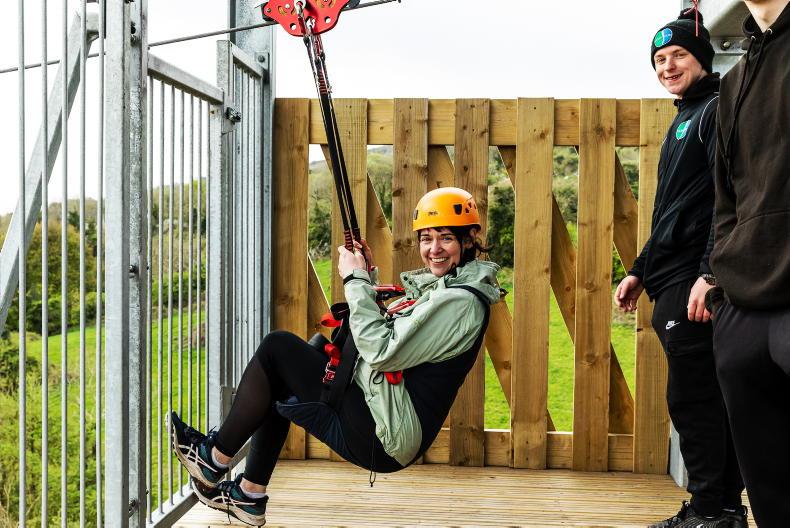
In 2010, there were seven employed, today there are 65. Many of whom are local and have come through training programmes.
Local man Seanna Foster is manager on the leisure site. He came to Colin Glen on a funded post with a donor paying his wage, but after a year he was kept on.
A professional footballer, he developed his own training course while upskilling in marketing and management, all of which Colin Glen was able to pay for.
Environmental objectives
Environmental stewardship is an important element of the park’s purpose. On the 240-acre site, there is a man-made lake full of fish. Numerous bird species live on the plateau as well as protected species on the grasslands.
“We haven’t lost sight of why we’re here. A lot of people see you getting £5 million of funding, and you’re building zip lines and they think ‘Well, that’s not really environmental,’but generating income means we can protect the environment. We can do a bit of forest management, we can do work with protected species, we can build our badger and otter holts”.
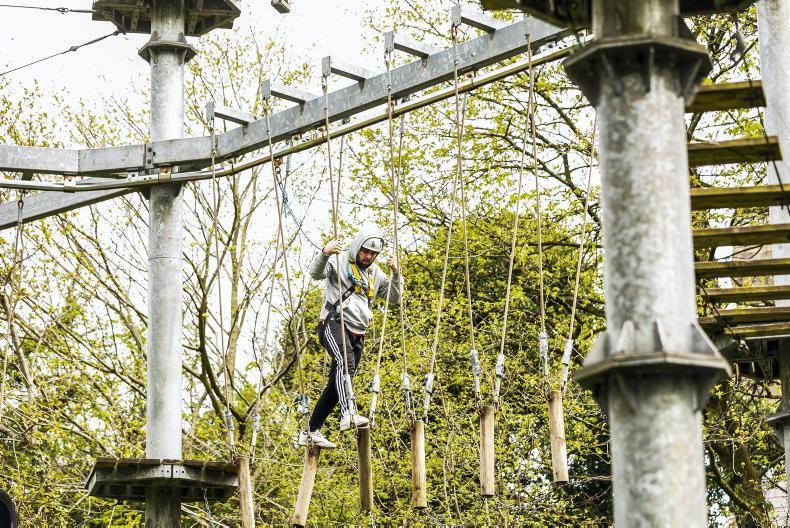
The park warden, Paul Bennett, has been with Colin Glen for 20 years. When his little granddaughter died, Colin asked if he would like a tribute for her in the Forest Park. Mila’s lake is so named after his granddaughter.
Colin says that Paul is known to everybody; “He does all our invasive species, all our forest management, but also river study groups and sometimes our Gruffalo stories.
He does all our mini beast hunts and bat nights. Back in the 80s he found part of a vertebrae of a plesiosaur in the river - it was major news. That river is full of fossils… we have all this history and heritage, going back to prehistoric times, to the Triassic era.
“We are trying to tell these stories. One of which is the Highwayman of Colin Glen, Naoise O’Haughian, who robbed the rich to help poor farmers in revenge for his family’s dispossession of their land. That was real, he was caught and executed.
“Bell Steel was a Presbyterian woman who protected the mass rock. Then Den McGraw who shot at the fairies who stole away his mother. They responded by sending a great black bull to haunt him.
What’s next for Colin Glen?
Watch this space, as the next big project is a new centre with a 30-bed accommodation located at the top station.
From this vantage point, there are views over Belfast and up Slieve Donard out to Stormont and Bangor. Colin is adamant that they are just starting to scratch the surface of their tourism potential in west Belfast.
A new path
Just before being strapped into a big harness and whooshing down the world-class longest zip line in Ireland, I met Ryan Morris, the adventure duty manager at the Mountain Entrance.
His role is to oversee the safety operations of the activities. However, looking after people’s safety was far from Ryan’s path when seven years ago, he was approached by a youth forum worker to attend a week-long course in Colin Glen.

Ryan Morris, the adventure duty manager at the Mountain Entrance.
After the summer, a three-month programme came up, which Ryan joined and so became a young ambassador for the Prince’s Trust. He explains the impact that this programme has had on his life.
“In the middle of the programme, my friend was murdered. We were walking back from the off-license and he got killed when we were attacked by a group of 30 people. The Prince’s Trust kept me on that right path.
“Then they nominated me for two awards, I came second in the young ambassador and I won the young achiever. I was then nominated for the big awards in London so I got to go over there with Ant and Dec and Thierry Henry and I won that award.”
The Prince’s Trust
Ryan explains that the Prince’s Trust is a charity for young people aged 16 to 30.
“They help people with different things, drug and alcohol abuse, trouble in school. They run personal development programmes, they teach people how to cook and how to live basically. The course I did was ‘get started on outdoor activities’.
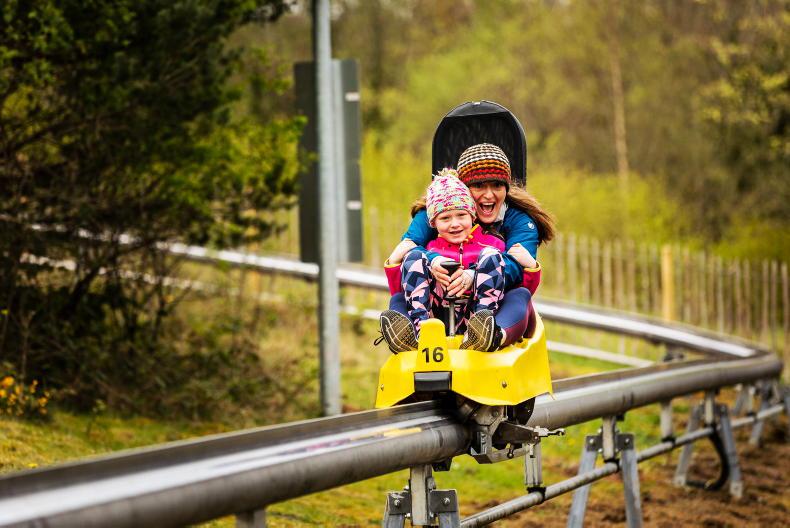
“I was 20. I always had an interest in jumping off cliffs and swimming with the lads but never thought I would be getting paid for it. When I came through the Prince’s Trust, they paid for my qualifications and then I fit into the activity role perfectly.
“Growing up, when I was a young person, I was a lot of trouble. There was trouble with dissident republicans, drugs, alcohol, the police… the house was constantly being raided for drugs. I probably would have ended up dead if I hadn’t gone on the programme.
“We employed 40 staff last summer and every one of them was from the local area. We’re not just employing people that already have all the qualifications - we employ the people from here and get them qualified.
Ryan travelled to the work in England for a year in Ford Castle when he qualified.
“I got to live in a big castle and had all my meals cooked and my room cleaned. It was like living in a hotel for a year - and all because of the qualifications I got here.”
What is an interface area?
An interface area is the name given in the North to areas where segregated nationalist and unionist residential areas meet.
To learn more
about navigating the adventure park and to make a booking, visit
www.colinglen.org
Read more
Irish teacher on living with the reality of school shootings in the US
’If the walls could talk’ - tales from Blessingbourne Estate in Fermanagh
The Belfast of 1989 was not a peaceful place. But under that cloud, a charitable trust was formed to try to transform an unofficial dump at Colin Glen in the west of the city.
Quite the challenge, as this piece of land is bounded on three sides by socially disadvantaged areas on an interface*.
“Half of the exploded buildings in Belfast were brought up here and tipped into it. The river was polluted and something like 70,000 tonnes of rubbish was taken out by the community,” CEO of Colin Glen, Colin O’Neill tells me, as we stroll through the Gruffalo Forest at the River Entrance of the park.
Many years prior to the park’s foundation, the Northern Irish government bought the Dunmurry Golf Course to build a road to the DeLorean plant.
Then, in 1994, they gave the golf course to Colin Glen: the idea being that a golf course could become a social enterprise with revenue-generating potential that would make public funding redundant.
“Now, it was a nice idea but it just didn’t work,” Colin says - because a nine hole golf course couldn’t compete with some of the top golf courses in Northern Ireland that surround it. But with the reduction in public funding proceeding none-the-less, the organisation was on its last legs.
Colin joined Colin Glen in 2010, quickly realising that the income gap had to be closed and investment was vital. SKYTrek, a ropes course and zip line attraction, was the first initiative on their road to financial stability.

“SKYTrek was our first toe in the water of trying to become a visitor destination. It was funded through a host of different grants, pulled in from a lot of different funds by convincing them that we could do this”.
Walking along the woodland path, the various Gruffalo book characters greet you. This was inspired by Colin’s own children. “I was telling the story to my children when it clicked that actually we’ve got a forest park - so why don’t we try and do that.”
It took two years to secure agreement with the image rights holders but the 3D sculptures did what Colin hoped they would, changing the type of person who was coming into the park.
Anti-social behaviour
As if on cue, I looked down quizzically at the burnt tarmac beneath my feet. As Colin’s eyes followed my gaze he explained: “We still have some antisocial behaviour - that is where someone brought in wheelie bins and set them on fire -but in comparison to before, it’s a lot less than it used to be.
“This area was being used by groups of older men on a daily basis for drinking. The police wouldn’t come in here.
“The Gruffalo brought younger families in. We started to see a change in terms of perception from the local community. From being an antisocial hotspot to an area where people would feel safe to come.”

Colin’s strategy from the start has been to increase footfall. On the morning of his interview for the role, he walked this same path through the park and was surprised when two scramblers came racing around the corner. In hindsight, he reflects that “it wasn’t unusual.
One of the things I said to the board, was ‘we need to make sure that we are tackling antisocial behaviour by making it uncomfortable for those engaged in antisocial behaviour’.
“If you’ve got hundreds of families and people walking through, the people looking to take drugs or set fire to things aren’t going to have the chance to do that. The important thing for us was that if there was damage we fix it straight away, because once you leave it to fester, people start to think: nobody cares about this place, so why should we?
“The Gruffalo is free. You can hear kids running up to the statues, exactly like my kids did seven or eight years ago. It has worked in that it has got community buy-in.”
Local people support local initiatives
Continuing to innovate is central to this community support. And 2021 was transformational with the opening of the Black Bull Run, the new driving range, the short zip line and the dome.
“So we’ve always tried to be as innovative as we can. You are between Lenadoon, Suffolk and Poleglass, three areas of Belfast that are massively socially deprived on an interface. We took chances and fortunately they paid off.
What we are finding now is that the young ones who were hanging around here are now availing of the facilities. A lot of community groups use it and then there’s the employment that we created.”

In 2010, there were seven employed, today there are 65. Many of whom are local and have come through training programmes.
Local man Seanna Foster is manager on the leisure site. He came to Colin Glen on a funded post with a donor paying his wage, but after a year he was kept on.
A professional footballer, he developed his own training course while upskilling in marketing and management, all of which Colin Glen was able to pay for.
Environmental objectives
Environmental stewardship is an important element of the park’s purpose. On the 240-acre site, there is a man-made lake full of fish. Numerous bird species live on the plateau as well as protected species on the grasslands.
“We haven’t lost sight of why we’re here. A lot of people see you getting £5 million of funding, and you’re building zip lines and they think ‘Well, that’s not really environmental,’but generating income means we can protect the environment. We can do a bit of forest management, we can do work with protected species, we can build our badger and otter holts”.

The park warden, Paul Bennett, has been with Colin Glen for 20 years. When his little granddaughter died, Colin asked if he would like a tribute for her in the Forest Park. Mila’s lake is so named after his granddaughter.
Colin says that Paul is known to everybody; “He does all our invasive species, all our forest management, but also river study groups and sometimes our Gruffalo stories.
He does all our mini beast hunts and bat nights. Back in the 80s he found part of a vertebrae of a plesiosaur in the river - it was major news. That river is full of fossils… we have all this history and heritage, going back to prehistoric times, to the Triassic era.
“We are trying to tell these stories. One of which is the Highwayman of Colin Glen, Naoise O’Haughian, who robbed the rich to help poor farmers in revenge for his family’s dispossession of their land. That was real, he was caught and executed.
“Bell Steel was a Presbyterian woman who protected the mass rock. Then Den McGraw who shot at the fairies who stole away his mother. They responded by sending a great black bull to haunt him.
What’s next for Colin Glen?
Watch this space, as the next big project is a new centre with a 30-bed accommodation located at the top station.
From this vantage point, there are views over Belfast and up Slieve Donard out to Stormont and Bangor. Colin is adamant that they are just starting to scratch the surface of their tourism potential in west Belfast.
A new path
Just before being strapped into a big harness and whooshing down the world-class longest zip line in Ireland, I met Ryan Morris, the adventure duty manager at the Mountain Entrance.
His role is to oversee the safety operations of the activities. However, looking after people’s safety was far from Ryan’s path when seven years ago, he was approached by a youth forum worker to attend a week-long course in Colin Glen.

Ryan Morris, the adventure duty manager at the Mountain Entrance.
After the summer, a three-month programme came up, which Ryan joined and so became a young ambassador for the Prince’s Trust. He explains the impact that this programme has had on his life.
“In the middle of the programme, my friend was murdered. We were walking back from the off-license and he got killed when we were attacked by a group of 30 people. The Prince’s Trust kept me on that right path.
“Then they nominated me for two awards, I came second in the young ambassador and I won the young achiever. I was then nominated for the big awards in London so I got to go over there with Ant and Dec and Thierry Henry and I won that award.”
The Prince’s Trust
Ryan explains that the Prince’s Trust is a charity for young people aged 16 to 30.
“They help people with different things, drug and alcohol abuse, trouble in school. They run personal development programmes, they teach people how to cook and how to live basically. The course I did was ‘get started on outdoor activities’.

“I was 20. I always had an interest in jumping off cliffs and swimming with the lads but never thought I would be getting paid for it. When I came through the Prince’s Trust, they paid for my qualifications and then I fit into the activity role perfectly.
“Growing up, when I was a young person, I was a lot of trouble. There was trouble with dissident republicans, drugs, alcohol, the police… the house was constantly being raided for drugs. I probably would have ended up dead if I hadn’t gone on the programme.
“We employed 40 staff last summer and every one of them was from the local area. We’re not just employing people that already have all the qualifications - we employ the people from here and get them qualified.
Ryan travelled to the work in England for a year in Ford Castle when he qualified.
“I got to live in a big castle and had all my meals cooked and my room cleaned. It was like living in a hotel for a year - and all because of the qualifications I got here.”
What is an interface area?
An interface area is the name given in the North to areas where segregated nationalist and unionist residential areas meet.
To learn more
about navigating the adventure park and to make a booking, visit
www.colinglen.org
Read more
Irish teacher on living with the reality of school shootings in the US
’If the walls could talk’ - tales from Blessingbourne Estate in Fermanagh



















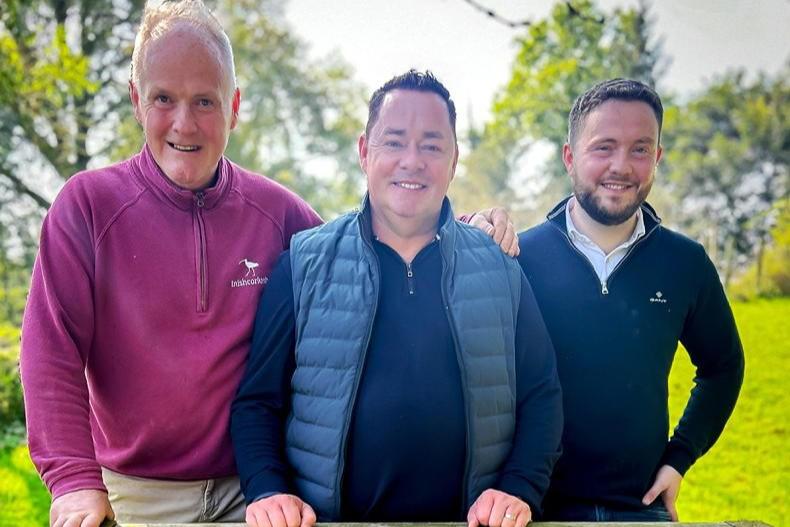
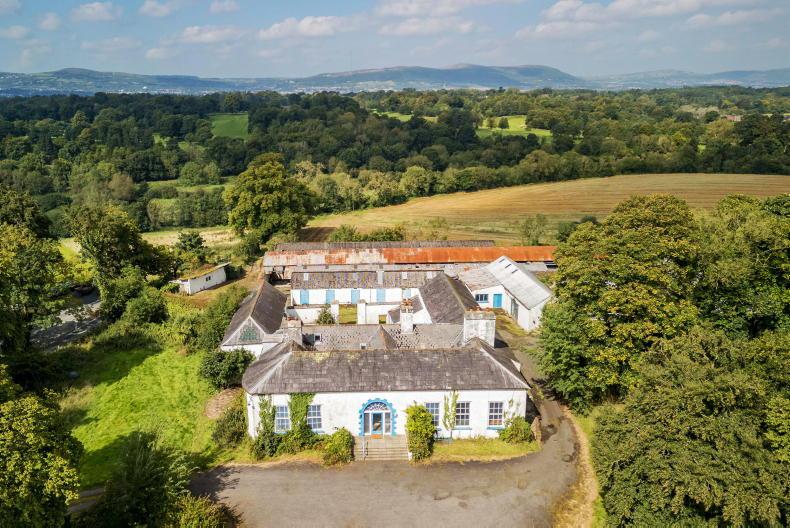
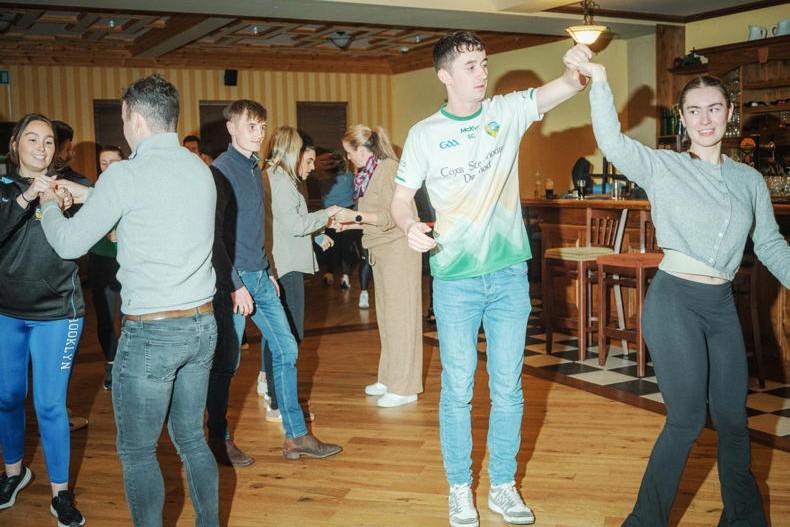
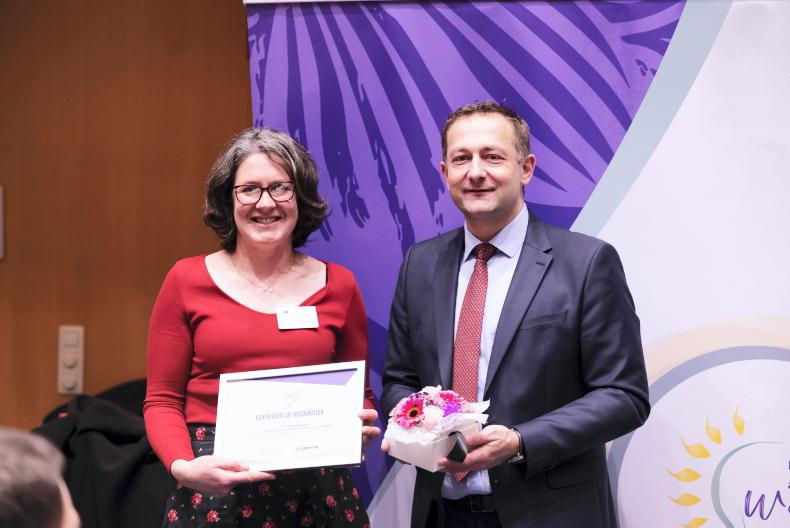
SHARING OPTIONS